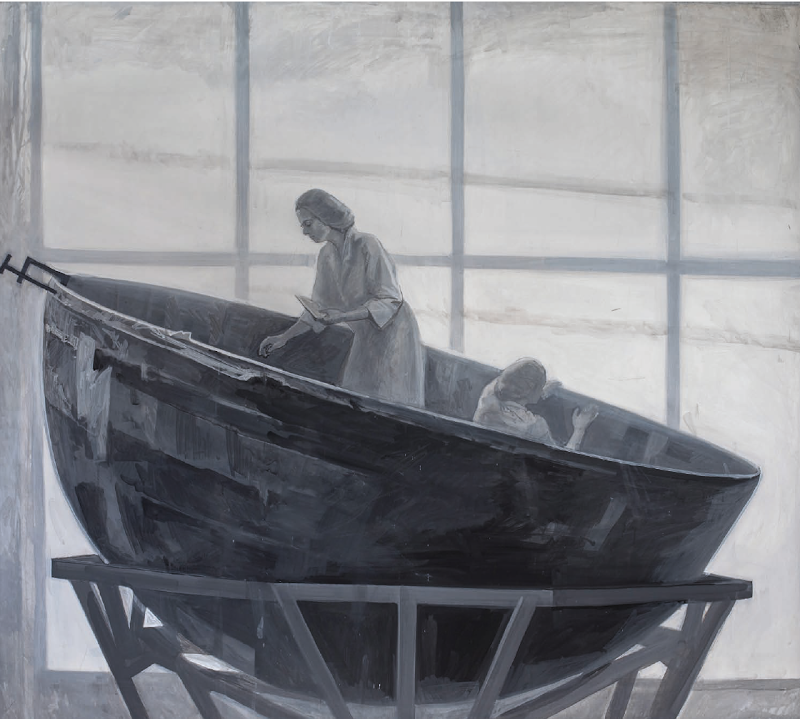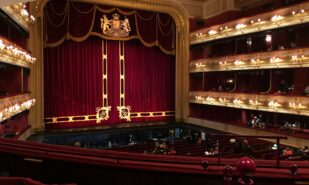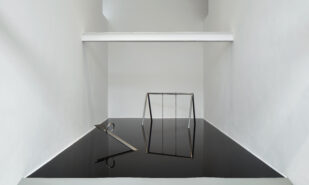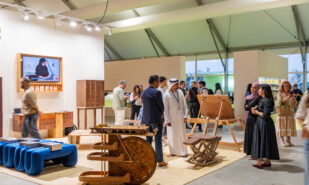In the famous film “Why Are We Creative?” directed by Hermann Vaske, the story takes the director himself through 30 years and multiple countries to ask the same question to many exciting artists like Bono, David Bowie, and Björk, who changed our culture.
In Search of the Sacred Thread: Contemporary Artists Looking for the Mystical Aspects in Everyday Realities
This question is ‘Why are you creative?’
Observing how this simple and often unexpected question takes an artist to the core of their being and to share something crucially important about our human experience is fascinating.
This question should be often posed to new artists long after the movie was released, and we would keep getting a wide range of answers, each reflecting the quirky creativity of its author. Yet, all these answers, even in the movie, do have a common denominator. It is this tendency of not being comfortable in the space of everyday life, as we currently perceive it, and wondering what might be beyond that.
In this article, let us pose this question to six contemporary artists whose art we find intriguing and search for how their answers are reflected in their works.
Agne-Maria Silkinaite:
Thanks to creativity, I study the world, learn to see it not trivially, find unusual meaning in ordinary things, and explore both the external world and my inner one “
Agne-Maria Silkinaite, an intriguing graphic artist, explores abandoned Soviet factories and space test sites. She is interested in what technology has given us and what it has taken away.
In her work “Technology V” she uses the minimal means of PVA and tempera on hardboard, in a monochrome key, to depict two women performing some task on what seems as a part of a spaceship from a soviet factory. This scene is beautiful and poetic as it captures the light from a large window with an endless sky and the composition of its frames is perfectly juxtaposed with the metal structure under the spaceship detail and its inclined angle. The viewer perceives a Miyazaki-like perfection of composition and light and an imagined silence (or a monotonous machine sound?) of this scene as it transmits the great promise of technology to give us freedom and to enjoy the beauty of the world, released from toil. On a closer look though, one notices that the women in the painting are held within this metal semi-sphere and they are deprived of their identity and completely disconnected from nature. This image encourages a profound re-examination of the relationship between man and machine, inspiring questions that linger long after enjoying the impression of the canvas.
See more paintings on Agne-Maria’s website: https://agne.ru/en/gallery
Nikolay Semenov:
Being creative today means being a person whom technology does not suppress but expands their abilities.
Nikolay Semenov’s art practice includes various genres of photography. He is especially interested in authentic photography because he wants to capture the raw essence of life and experiences. Portraiture is a genre in which he possesses a keen artistic sensitivity, bringing out the unique character of his subjects.
In the portrait “Who Am I?” a young man is gazing at himself in a mirror while shaving his head. We have an unusual perspective coming from between his head and his head as if offering a portal to this person’s private world of feelings and thoughts. The subject becomes an imprint of the photographer’s perception, raising questions about the essence of reality and the impact of time on our surroundings as well as in the case of this particular work – questions of identity and humanity being gradually deprived of it as the development of technology rapidly progresses. Through the lens of his camera, Semenov provides a unique perspective on the complex relationship between the artist and the ever-evolving world, constantly questioning its true nature and aiming to transcend.
Nikolay Semenov’s work can be described as a “conscious daydream,” as Semenov captures fleeting moments, freezing them in time before they transform or vanish. His artistic quest is aiming at the very nature of reality – as if the artist is asking himself if the world he captures on film is a reflection of his consciousness, or if it exists independently.
See more portraits on Nikolay’s website: http://niksemenov.tilda.ws/page31987230.html
Siarhei Yazlavetski:
I create to explore myself. I believe that there is only one way of finding new features of my character which is stepping out of the routine.”
Siarhei Yazlavetski is a thoughtful contemporary digital artist and photographer who enriches his creative practice with his Applied Neuroscience and Artificial Intelligence expertise. Given his educational background, which is unique for a contemporary artist, Siarhei is committed to understanding the interplay between the human mind and art on a deep scientific level.
Yazlavetski’s project, “Silhouette,” offers an unexpected perspective on Venice, the world’s most photographed city. Because of the artist’s unique background and his emotional sensitivity, it appears in his work that when he sees the silhouette of a person, it feels as if he knows them intimately, imagining their appearance, speech, and behaviour. This trait also guides his approach to Venice, aiming to leave out all the inessential details, colours, and annoying tourists, leaving only the outlines and returning to the mystical core of this mediaeval hub of artists and merchants. By doing so, Yazlavetski invites the viewer to fill these contours with their images, creating a personal connection to the essence of this iconic city even for those who have not been there, or maybe were distracted by the busyness of the streets on their journey to Venice. Through “Silhouette,” Siarhei creates an unfinished story and invites his viewers to continue the next chapter. This minimal photography captures the mystical beauty of Venice and questions the value of the era of distractions in which we now live.
See more images of this series on Siarhei’s website: https://www.yazlavetski.com/#/silhouette/
Anna Katsur:
I am creative because I’m inspired by mistakes and unforeseen twists. They make me see things from a different angle and find new opportunities and ideas in the most unexpected places.
Anna Katsur is a talented visual artist who can make digital and traditional paintings converge. She treats both mediums with a sense of irony and at the same time infuses it with her fiery avant-garde-like energy.
She does not detest the means of artificial intelligence for creating artwork, rather she dives into it head-on to test where the boundaries of reality are. Where is that photo wallpaper painted as blue skies that you can pull up and discover that your entire world was a show stage of your imagination, as in the “Truman Show”
The lines defining our reality are blurred now because of technological advancement as well as global challenges, so it is time to redefine the definitions of illusion and truth, and this is exactly what Anna Katsur is researching in her work. “Painting Three” in the “ILLUSORY” series is a striking symbol of how the Unattainable becomes the engine of human desires. It is our quest for truth that keeps the world spinning around, and yet the red door is shut, its colour symbolising both the temptation of entering it and the dangers this might incur. The other way to interpret the mysterious red door at the top could be that it embodies that entity which the artist refers to as “Big Other”: it constantly entices us, promising real satisfaction and the solution to riddles, but remains out of grasp.
Mayya Yaroshenko:
I am creative because it is my unique language. Paintings are the words I speak, meant to be heard with the eyes”
Mayya Yaroshenko is a digital artist, who has a background in robotics and uses a wide range of various digital software (such as Photoshop, Paint Tool Sai, Blender, Cinema4d, zBrush, and Adobe Illustrator) to create her artworks on such themes as man-machine relationship and the nature of reality. The multilayered blend of these tools not commonly used by contemporary artists gives her style a distinct and recognisable twist.
The artist’s distinct style can be in significant part associated with her Art Manager/Producer, Natalia Knorre, and this collaboration is especially expressed in Mayya’s work “The Trick Of Perception”. The relationship between an artist and an art manager is a place of wide commentary and sometimes frustration on both sides, however, this is the case of both creative and career synergy. The artist shares that for this particular artwork, Natalia suggested a theme based on creating a commentary for the art world and tying it to the nature of human perception and our world in general.
Natalia Knorre’s professional intuition and thoughtful guidance, which takes into account the unique strengths of the artist: Maya’s knowledge of anatomy, a special talent for depicting light and knowledge of a wide range of digital tools, resulted in this fascinating artwork, in which a figure stands before a mesmerizing semi-abstract painting, where colours of purple, magenta, orange, and red converge into a stunning sunrise.
For Natalia Knorre, the word “creativity” means the demonstration of art in a new context. Being an independent curator has challenged her with exhibiting peculiarities, and when sometimes it seemed that nothing could be done, Knorre always found a way for a better option. By doing that, Natalia has established a pool of artists who trust every curatorial decision she makes — the themes she prefers to cover echo like a summer breeze that metaphorically gently touches one’s skin. The shows Knorre curates tend to be visually elegant, which makes her method recognizable in the sphere.





